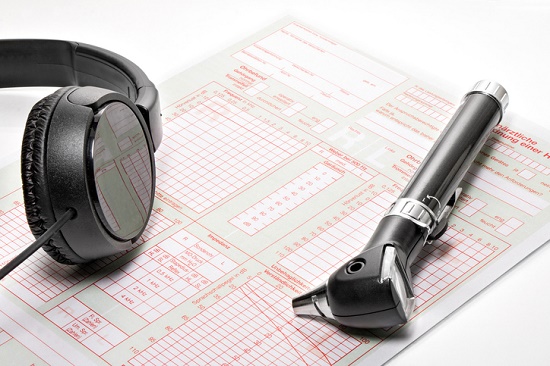
The hearing test truly is the easy part. The challenging part is accepting your hearing loss and actually setting up the hearing test in the first place.
You have most likely heard the stats by now: 48 million people in the US have hearing loss but only a minor fraction actually do something about it, and only 20 percent of people who could benefit from hearing aids actually utilize them.
So if you’ve already scheduled your hearing test, well done, you’ve already conquered the most significant obstacle to better hearing.
The hearing exam, as you’ll discover, is a simple and easy, non-invasive process that will uncover the level of your hearing loss to help determine the most suited treatment course.
After you first arrive at the office, you’ll begin by filling out some paperwork. Then, you’ll meet with your hearing care professional to go over your hearing health history.
Your Hearing Health History
Your hearing loss, if present, can be due to direct exposure to loud sound, the natural aging process, or by an underlying condition. You’ll want to exclude any underlying conditions prior to proceeding to the actual hearing test.
If you have an impaction of earwax, for example, you may very well be hearing better within a few minutes after a professional cleaning. The presence of any other conditions will be examined and the applicable referral made, if necessary.
After a review of your general medical history, you’ll discuss your exposure to loud sounds, your hearing loss symptoms, and what you would like to accomplish with better hearing.
It’s very important to determine possible causes, how symptoms are impacting your life, and how better hearing will improve your life, which is in the end the whole point. Be wary of the practitioner that doesn’t seem to really care about the main reasons why you want to improve your hearing to begin with.
Testing Your Hearing
There’s one additional step to take before starting the hearing test: the visual evaluation of the ear with a device known as an otoscope. This will help in ruling out any issues with the ear canal, the eardrum, or the elevated buildup of earwax.
Next, you’ll be accompanied to a sound-treated room with your hearing care provider. You’ll be asked to put on headphones, and the provider will begin to play you some sounds.
You’ll be presented with different sounds at multiple frequencies, and you’ll be requested to identify the quietest sounds you can hear at each pitch. This is labeled your hearing threshold, and the hearing care professional will record these values on a diagram called an audiogram.
The hearing exam will probably also include speech testing, where you’ll be instructed to repeat the words presented to you. Various types of words, presented at various volumes with and without background noise, will be presented. This will help confirm if hearing aids can assist you with speech understanding.
When the hearing test is over, your hearing care provider will discuss the results with you.
Reviewing Your Hearing Test Results
Referencing your audiogram, your hearing care professional will now review your hearing in both ears. Determined by the results, your hearing will be categorized as normal or as exhibiting mild, moderate, severe, or profound hearing loss.
If a hearing loss is present, the next step is going over your treatment options. Given that there are no present medical or surgical treatments to repair hearing damage, this means examining your hearing aid options.
Current hearing aids are available in an array of shapes, sizes, and colors, at a variety of price ranges with a number of advanced functions and features. In selecting your hearing aids, it’s important to work with an experienced hearing care professional for three main reasons:
- They can help you find the ideal hearing aid model to satisfy all of your objectives.
- They can help you identify the advanced features you need—along with the ones you don’t—at a price that suits your budget.
- They can program your new hearing aids to amplify only the sounds you have trouble hearing—established by the hearing test—ensuring optimal sound quality.
And that’s it, a quick, simple procedure in exchange for a lifetime of healthier hearing. We’d say that’s a very good deal.
We look forward to seeing you!






